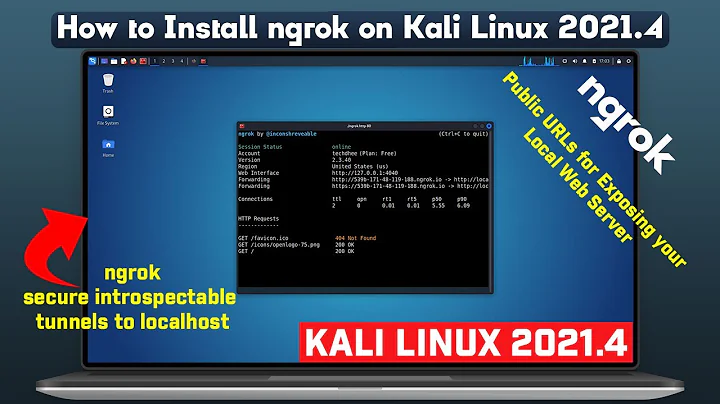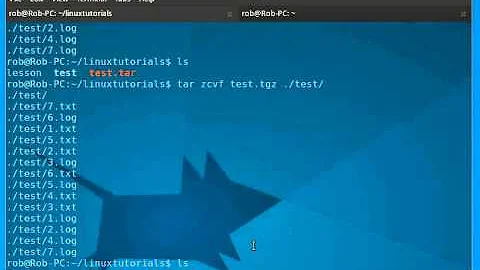Specify root dir inside tarball
Solution 1
Make a symlink first, and have tar follow it.
ln -s project-root something-else
tar cjf foo.tar.bz2 something-else/*
rm something-else
The /* is necessary to follow the link and select all the contents rather than just tarring the symlink itself. You could alternatively use the -h option on GNU tar (but this will also follow links inside, which you may not want to do) or the H option on BSD tar (like on a Mac).
You could even do this from inside project-root:
cd project-root
ln -s . something-else
tar cjf foo.tar.bz2 --exclude=something-else/something-else something-else/*
rm something-else
Unless you explicitly exclude it (as above), the symlink will exist in the tarball too.
Obviously if you are doing this lots of times and don't mind the symlink hanging around it doesn't have to be deleted and recreated each time.
Solution 2
You can rename project-root inside the tarball with the 7-zip GUI (and probably other archiver programs as well), but this may do a full decompression-recompression cycle on compressed tarballs. (Read: this may take a while on large, heavily-compressed tarballs.)
The best way to do what you want is to change the name before creating the tarball. A simple way would be to temporarily rename project-root to something-else:
# temporary rename; tar; restore original name
$ mv project-root something-else ; tar cjf foo.tar.bz2 something-else ; mv something-else project-root
I'd probably go a little more complicated: make a copy with the name I want in the tarball. This avoids potential bugs or missed steps in whatever fix-it-up-later process might be employed, and I might want to keep both copies around for other purposes.
# make me a copy
$ ( cd project-root ; tar cf - . ) | ( mkdir something-else; cd something-else; tar xf - )
# test the copy here if needed
$ diff -r --brief project-root/ something-else/
# create my tarball
$ tar cjf foo.tar.bz2 something-else
Related videos on Youtube
weeJimmy
Updated on September 17, 2022Comments
-
weeJimmy over 1 year
Is there a way to execute
tar cjvf foo.tar.bz2 project-rootSuch that when the tarball is extracted, it doesn't extract to project-root, but instead extracts to something else? i.e.
tar xjvf foo.tar.bz2 cd something-else # see all files that were within original project-rootI'm aware of -C, but I want it such that something-else doesn't exist yet.
-
 Admin over 14 yearsMeaning to say, the extracting user shouldn't have to know what something-else should be (i.e. mkdir it), it's the compressing user that specifies it.
Admin over 14 yearsMeaning to say, the extracting user shouldn't have to know what something-else should be (i.e. mkdir it), it's the compressing user that specifies it. -
 Admin over 14 yearsIt sounds like you're asking, "If the user extracts the whole archive, create project-root subdirectory. If the user extracts just part of the archive, then call the subdirectory something-else." If not, then just name the directory something-else in the first place.
Admin over 14 yearsIt sounds like you're asking, "If the user extracts the whole archive, create project-root subdirectory. If the user extracts just part of the archive, then call the subdirectory something-else." If not, then just name the directory something-else in the first place. -
 Admin over 14 yearsImagine the original directory is called project/, and I want to make tarballs for project-0.1, project-0.2, and so on. Renaming the dir each time doesn't seem optimal. It would be better suited as an option on tar.
Admin over 14 yearsImagine the original directory is called project/, and I want to make tarballs for project-0.1, project-0.2, and so on. Renaming the dir each time doesn't seem optimal. It would be better suited as an option on tar. -
 Admin over 14 yearsyeah. what you're talking about borders on "version control", and is slightly outside
Admin over 14 yearsyeah. what you're talking about borders on "version control", and is slightly outsidetar's scope (which is why there's no option for it). generally if you have a project and want to make a point release, you'd use your version control tools to set certain versions of certain files as project v0.1, or v0.2, etc. then checkout the v0.1 files to a new directory project-0.1, tar that directory, and tahdaaaah, done.
-
-
quack quixote over 14 yearsnote: if you're looking for this functionality as a means of poor-mans-version-control, you probably want to keep a separate copy of your point release anyway.
-
weeJimmy over 14 yearsGreat answer(s); thanks. Indeed, at the moment, I am doing a multi-command bash chain to compress, decompress, rename and recompress. Your "tar cf - ." solution looks a little better than that, though.
-
quack quixote over 14 yearsyou could probably do the same thing with "
cp -a project-root something-else" .. i just automatically reach for the "tar cf - ." one-liner when i need to copy directory trees. been using it so long i can't remember why -- might've been something to do with not understanding all the options tocp. the one-liner's complicated enough that i have to pay attention lest i get something wrong ("tar cf . -" doesn't work so well..) -
DaveParillo over 14 yearsGood answer. Maybe the
tar -cf - .thing started from making data transfers between machines? of the sorttar cf - . | rsh dest.foo.net 'cd /dest/dir && tar xf -'? -
quack quixote over 14 years@Dave: sure, maybe. it certainly introduced me to the power of chaining commands.
![How to create,extract,compress tar files in linux ubuntu [ Explained ]](https://i.ytimg.com/vi/nxor30XUqnU/hq720.jpg?sqp=-oaymwEcCNAFEJQDSFXyq4qpAw4IARUAAIhCGAFwAcABBg==&rs=AOn4CLAI1HQ5BFSNoJH1hC_FqiK-sFhSAg)



